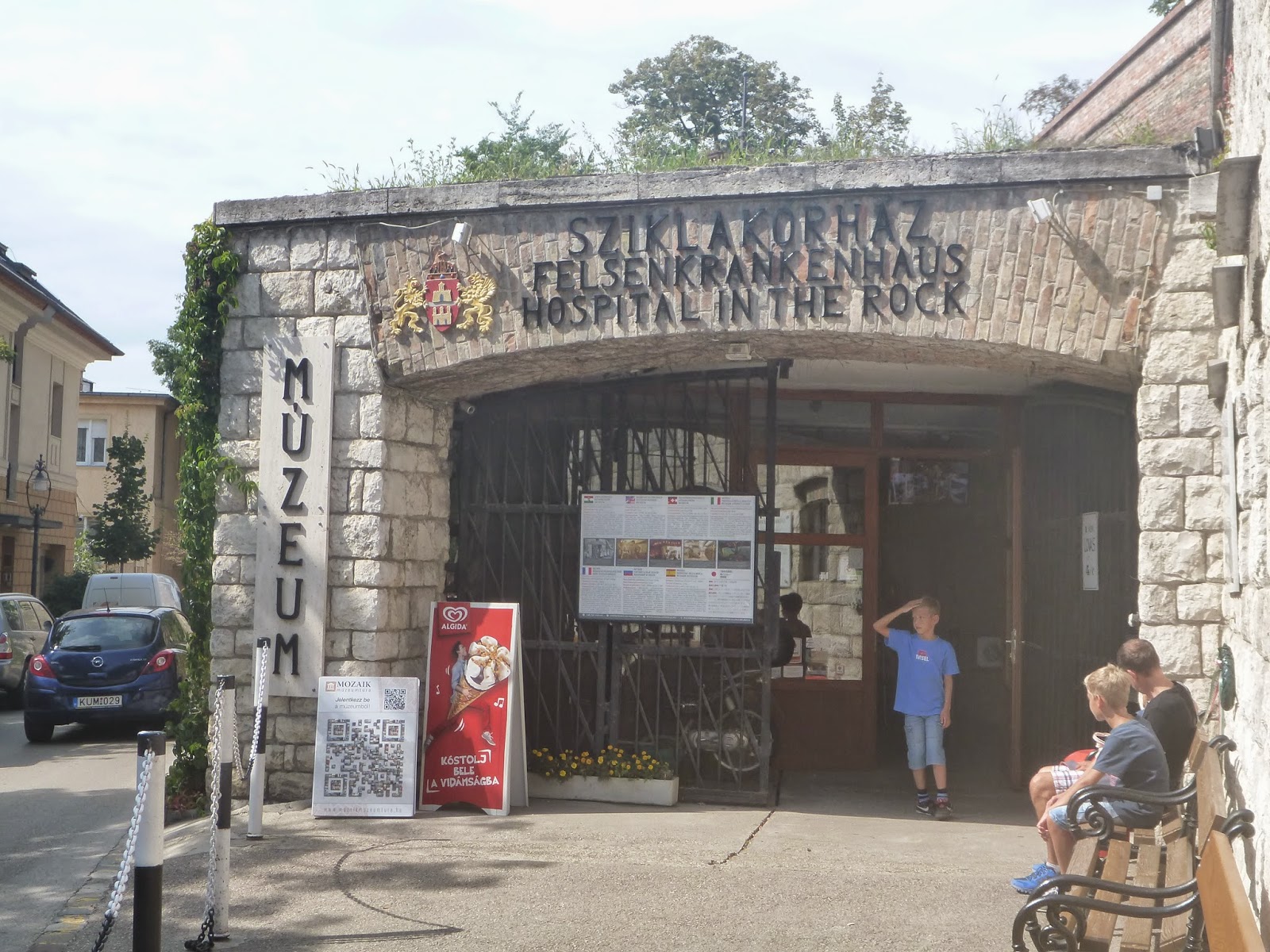So we come to the final instalment of the 'Budapest series'. As previously mentioned, I visited the Museum of Military History. I thought that it would probably be a good museum with plenty to see, as Budapest has quite a rich history when it comes to wars and battles. I certainly wasn't disappointed - I spent several hours looking around the various exhibitions, and I could have done with several more! The first thing that struck me was the amount of medals that were on display. There were so many, and spanning such a large number of eras. I took quite a few pictures of them, but I thought I'd limit the blog to just one image of a couple of them.
In addition to the vast array of medals, there were a number of uniforms on display. Again, although I took quite a number of photos, I selected a couple of my favourites for the blog.
I think the best section of the museum was that dedicated to the weaponry used Second World War. Again, the number of items on display was phenomenal, with knives, grenades, handguns, automatic weapons, missile launchers and landmines all on show. I also enjoyed the communications section, and spent a while looking at the radios and other equipment.

This next photo was a bit random. They had a replica cockpit from one of the aircraft used in the Second World War, and I was just in awe at the number of buttons, switches and dials to see. It looks extremely complicated - I can only imagine what it was like trying to remember what they all did and where in the cockpit they were!
After viewing the displays of the Second World War, I moved outside to look at the replica tanks and anti-aircraft guns, and then on to the artefacts from the First World War. Unfortunately I was quite hurried for time and didn't get to spend as long as I would have liked looking at everything. I did get to see a number of the uniforms though, and took some pictures of the swords and medical equipment that was used. I must admit that some of the equipment looks very similar to the instruments knocking around the surgical theatres in Auckland, but just a bit older. It makes me think that even though World War I was around a century ago now, that surgery can't have changed too much. I think the pain relief is just more reliable nowadays!
The day after my visit to the museum, I went to the Hungarian Parliament Building. The building itself is hugely impressive, and apparently the tallest and largest building in Hungary. You can enter and have a look around, but I chose not to as it was quite expensive. It was definitely one of my favourite buildings in the whole of Hungary though.
One of the things that I really found hilarious in Budapest, was how much the police resembled Thunderbirds puppets. I think it was the hats more than their glazed-over looks and rigid movements! I just had to try and stealthily take some pictures of them, as had they seen me I may have got into trouble.... and I'm not sure I'd have been able to take them too seriously!
After the parliament building, I walked to Heroes Square. Heroes Square is famous for its statues depicting the Seven Chieftains of the Magyars (the leaders of the seven tribes of the Hungarians) and other national leaders. The tall column in the centre is topped by the archangel Gabriel, and sits directly behind the cenotaph. Again, it was all very impressive, and despite only putting a few pictures on the blog, I took many many more.
Just over the bridge from Heroes Square is Vajdahunyad Castle. It was built in 1908 and is a replica of a Transylvanian Castle of the same name. It sits on an artificial island, and can be reached by using any one of four bridges. The Museum of Agriculture is located within the castle, but again, I didn't go in. I just wandered around the courtyard and took some pictures of the outside. Within the courtyard there was a beautiful church, with a very intricately-carved entrance. I can imagine a lot of couples getting married there, and having their photos taken outside the church and castle. I think that in addition to the Hungarian Parliament Building, Vajdahunyad Castle and its associated church are also favourites of mine.

There is just one last photo I feel needs to go on the blog, although it should have really been in the last post. It's a very nice picture across the Danube to Fisherman's Bastion and the spire of Matthias Church.
In summary, Budapest is beautiful. The buildings are architecturally stunning, and the city is made even more picturesque by the Danube running through its centre. There was plenty to see and do, and all within easy reach of my centrally-located accommodation. I travelled predominantly on foot, but also used the metro, and could have very easily found a taxi if required. It was also relatively simple for me to communicate, as the predominant languages in the tourist areas are English and German, although for some reason, I was always spoken to in Hungarian first! I'd definitely recommend going if you get the opportunity, and would definitely like to visit again myself.











































.jpg)

.jpg)
.jpg)
.jpg)
